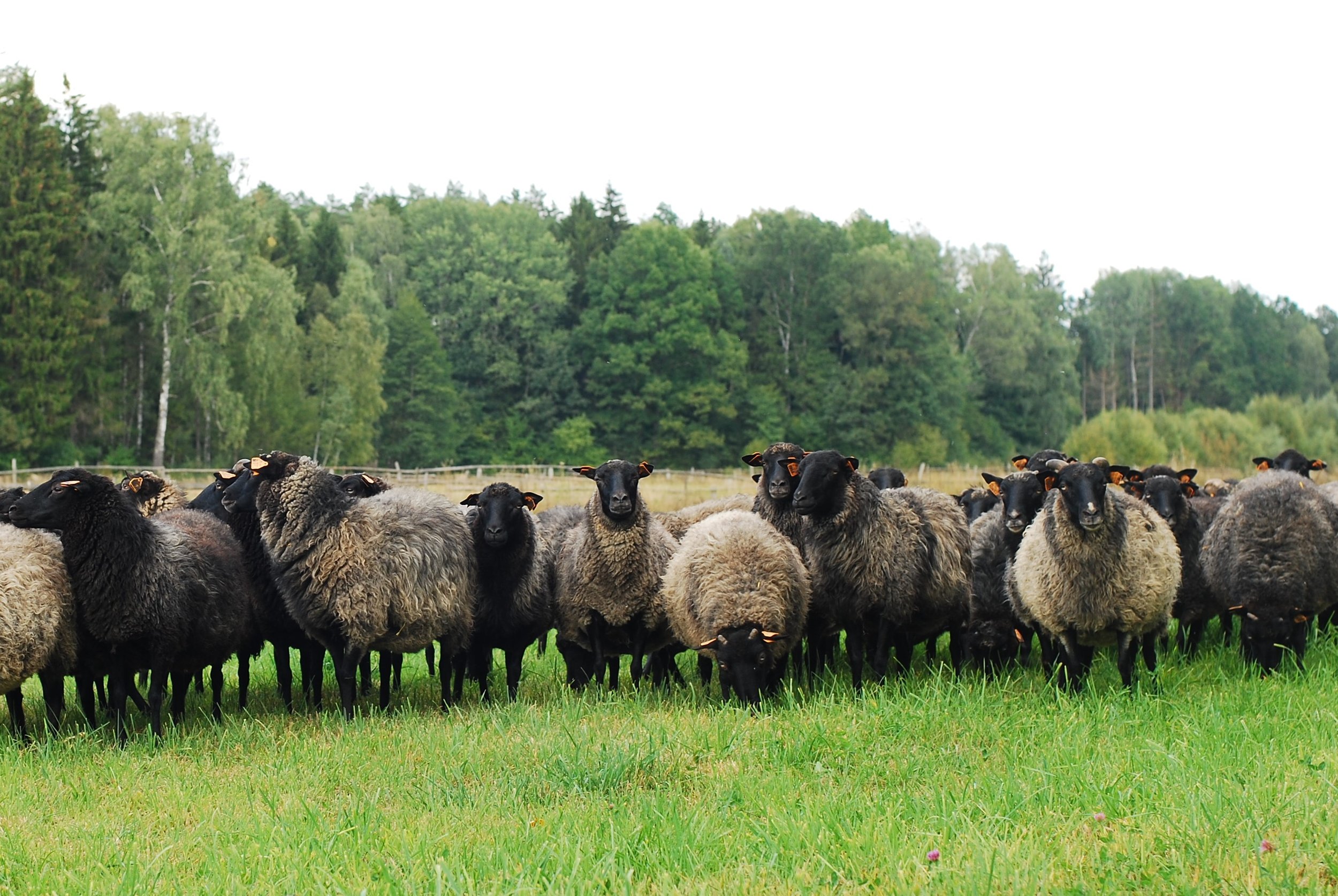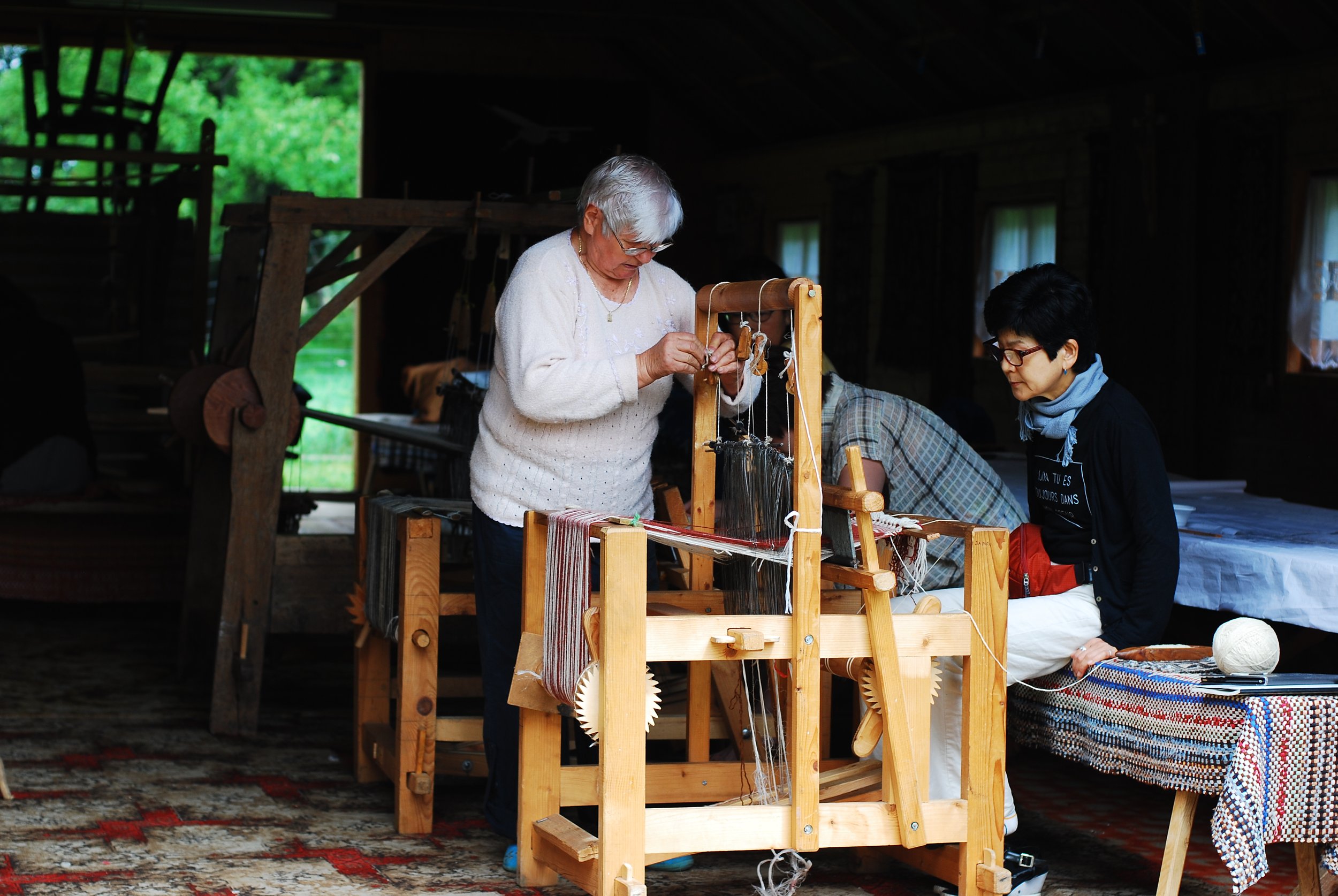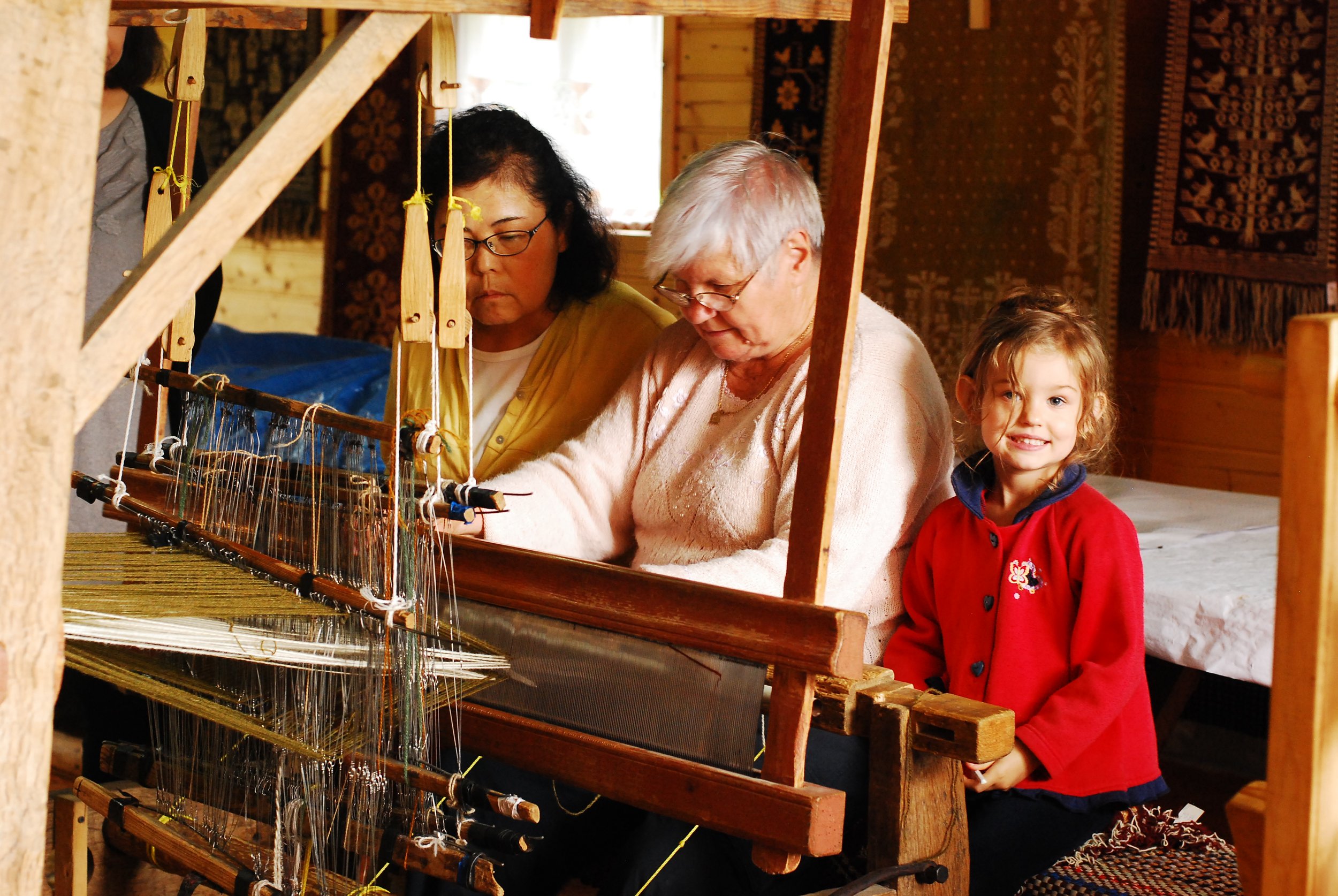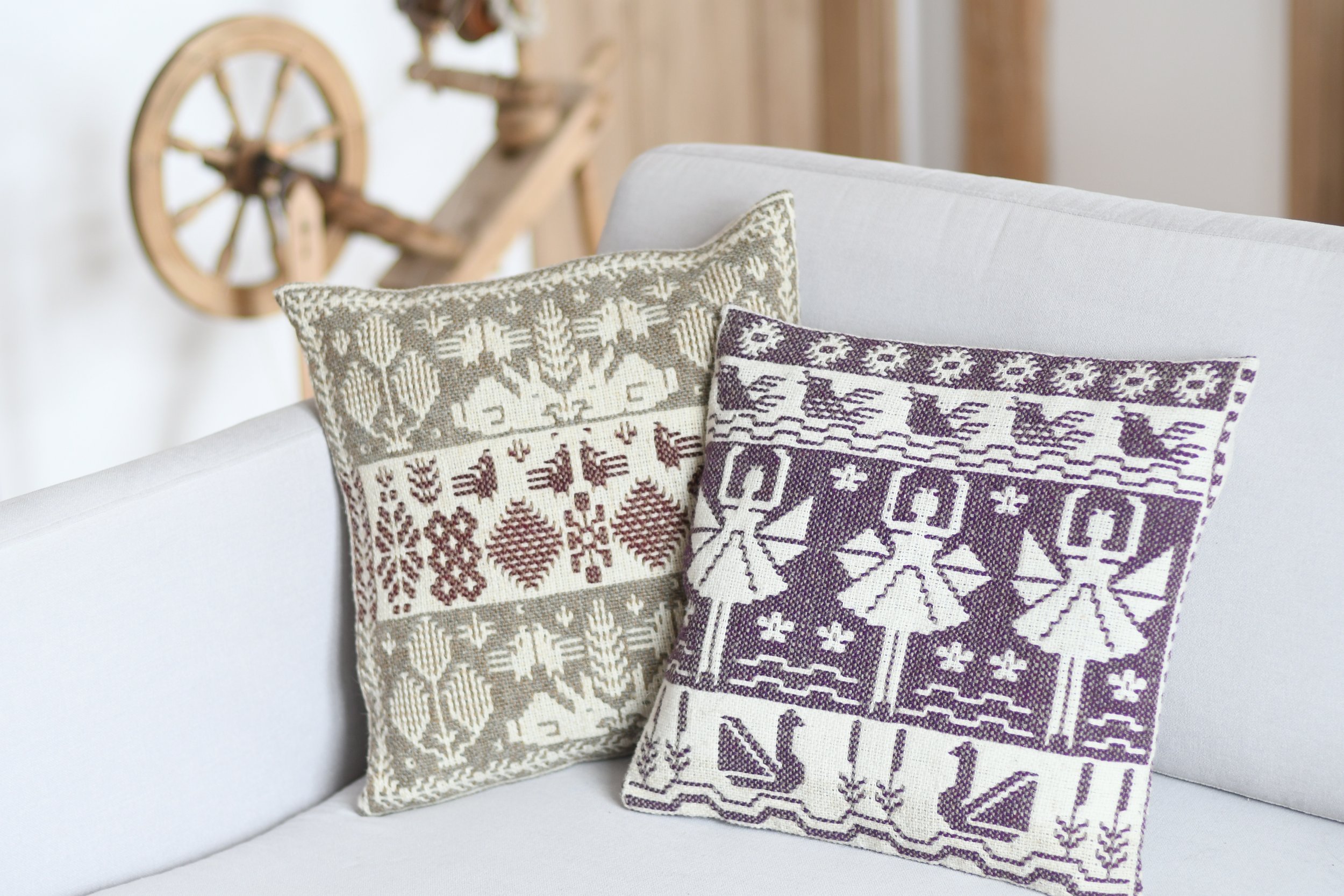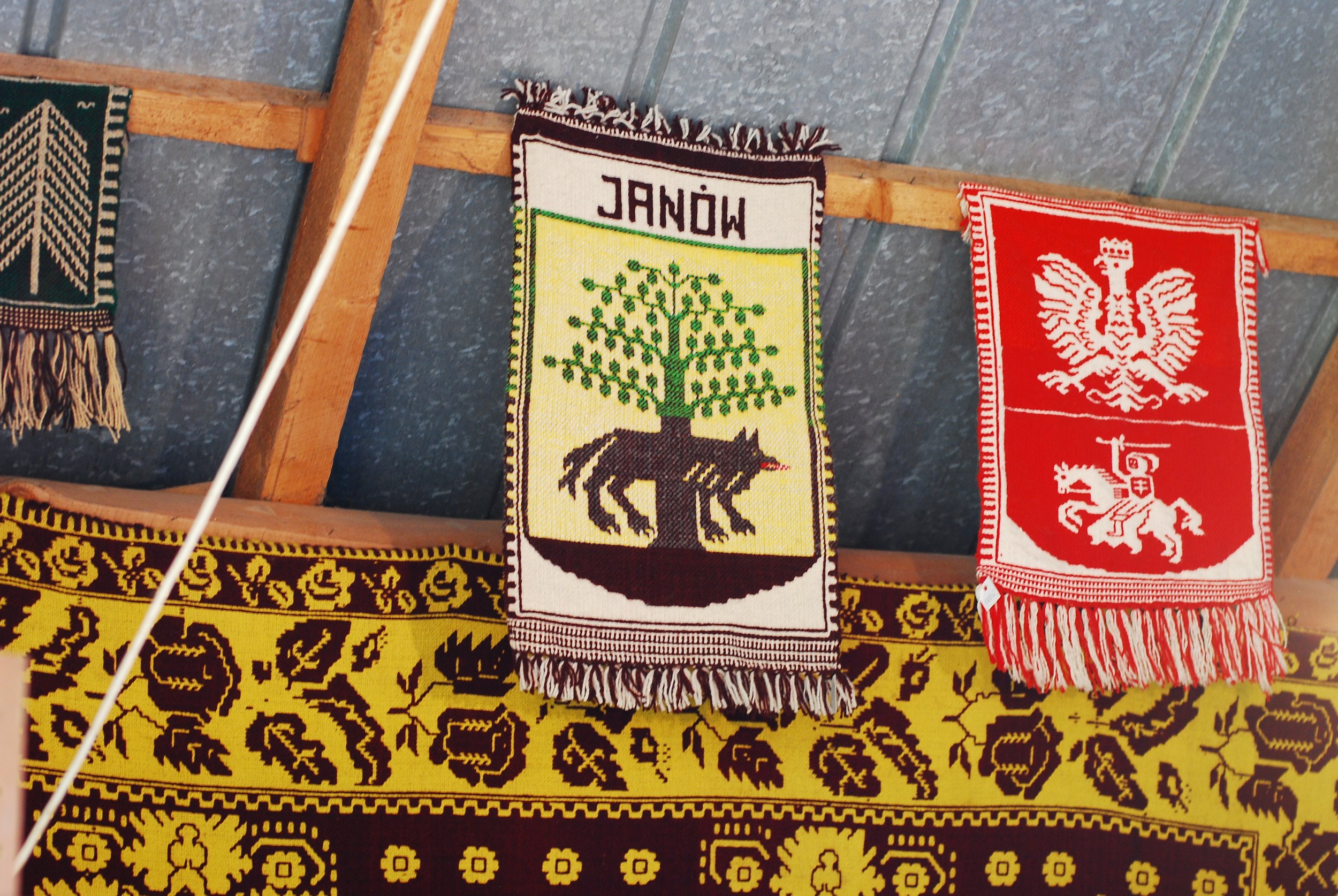Izumi Fujita
AN ANTHROPOLOGIST PROMOTING POLISH UNIQUE DOUBLE WARP FABRIC IN JAPAN
Izumi Fujita and Japanese weavers in company of master weavers of Janow - Lucyna Kędzierska and Romualda Puzanowska
Two wefts in opposing colours and a double contrasting warp. On a manual machine, using a unique technique, with incredible precision the weaver uses a wooden slat to bring out the lower warp threads on top and pulls the threads of the upper layer down. Patterns of the same shape but in two inverted colours appear.
This is how double warp fabric comes to life in Janów, a village in Poland’s Podlasie region. Complicated in its simplicity, it is graphic and beautiful, requiring patience, devotion and time. With years of practice, it becomes not just tricky work, but a form of relaxation – a way to unwind, even meditate. In Janów and the neighbouring villages, no person is alien to weaving. Yet the exceptionally talented artists who are driving the craft into the future now number just 12.
While mastery of the skill comes first, the key value of the woven piece lays in its narrative. Back in the 18th century, when the local population was largely illiterate, this was a way for people to tell their stories. Turning to their looms after a hard day of work in the field, they would brush off their fatigue, translating their thoughts and dreams into woven pieces of art.
Time passed, yet for many local women in Janów weaving is still their favourite medium for communicating, reflecting and observing. The techniques and themes stay faithful to tradition, while the landscapes depicted on the woven works have moved forward, resembling the modern lifestyle and the natural local surroundings in all their honest, charming beauty.
Izumi Fujita, a Japanese anthropologist based in Poland, has contributed tremendously to the reemergence of the double warp weaving technique across the past 10 years. Apart from supporting weavers with regular orders, she has introduced the Janów techniques to a Japanese audience, disseminating knowledge about it through pop-ups, exhibitions, workshops and publications.
Her first encounter with Polish double weaving was in 2010. When attending a Folk Art Fair in Kazimierz Dolny, she met two exceptional weavers from Janów: Teresa Pryzmont and Danuta Radulska. Both artists have a huge portfolio of work, with their rug commissions hanging in museums and private collections in Poland and abroad. Fascinated by the craft, she purchased their works, which immediately found buyers in Japan. This is how her collaboration with Janów artists began.
“I visited the village and fell in love with it immediately. However, awareness of the tradition was really going down-hill… it was a difficult time. There were no people interested in the technique, no clients. Only five active weavers. I decided to do something about it,” recalls Izumi. “I started small, with pop-up stores in Tokyo and Sapporo.”
Pop-ups soon evolved into exhibitions, showcasing rug commissions realised by Janów artists on a specific theme. Izumi set up SlowArt, which acts like a showroom for curated selections of Polish handcrafted pieces. “Japanese people enjoy and respect traditional crafts” says Izumi. They support folk artists not only through buying their products, but also try to learn the techniques themselves. Therefore, in 2015 Izumi started organising weaving courses for enthusiasts from Japan. Each course lasts two weeks and is designed not only to teach the craft, but also to introduce and immerse attendees in the atmosphere of the village and local community.
“We stay in the village for 10 days. It is not only about learning the technique of double weaving, but about meeting people, communicating. Visiting the village, experiencing the scenery is very important. It is more like fieldwork for us; I want them to understand why this type of weaving is made, how and who is making it. During these 10 days, they learn much more than just the technique itself,” explains Izumi.
One might wonder what makes Janów’s double weaving so appealing to Japanese customers if their own country is rich in textiles of top quality and an exceptional, refined design aesthetic? “The Polish twin warp method is very interesting, as it allows the weaver to create an individual pattern – there’s no rigid framework. It’s like drawing on paper and can really be anything they imagine,” Izumi says.
The observational aspect of this craft makes it very adjustable to different surroundings. Japanese people can continue practising double weaving in Japan by depicting the scenery around them using the Polish heritage technique. In this way, an interesting mix of aesthetics and cultural influences is born.
Izumi Fujita’s work gives local weavers a steady income, but also motivation and room for growth and development. She cares about returning to old ways of doing things, many of which were given up due to the poor financial situation of the village in the past. These techniques include hand-spinning and natural dyeing, which is of particular interest to Izumi. She emphasises how different hand-spun textiles appear compared to factory-made ones. “I believe that hand-spinning makes a textile of more value. It was practised traditionally, but it has declined over the years. I want to support people who are still doing it. Currently, I work with two local weavers on hand-spun yarn.”
Creating yarn manually is a particularly valuable experience, as it is the essence of textile creation. Izumi compares hand-spinning to the essence of existence and underlines its ethical meaning. Japanese enthusiasts are interested in sourcing authentic Polish yarn to create double weaving in its truest form.
“I’m getting a lot of requests to sell wool from local Janów sheep. I’m therefore looking into raw materials, too,” Izumi explains.
In 2017, Izumi published a book in Japanese dedicated to the rare craft of Janów. It includes a detailed step-by-step guide through the techniques, materials and cultural background of weaving, with silhouettes of key artists from the village. It is the first such publication showing the thorough technical underpinnings of double warp fabric, as well as the lifestyle of its cultivators.
Thanks to Izumi Fujita, Japanese customers have already purchased thousands of Janów pieces and have created a lot of pieces themselves. Izumi believes that there might actually be more Polish handcraft in Japanese homes than in Polish ones. Citing Mahatma Gandhi as one of her greatest inspirations, she believes that weaving has particular importance for societies and nations. Gandhi was an advocate for weaving, seeing it as a powerful tool in the unification of humankind; he also used to highlight its therapeutic value.
While weavers have predominantly worked with rugs and larger format pieces, Izumi introduced offering tailored for the modern interiors and expectations of the Japanese market. New items like bags, purses and smaller forms to hang on the wall in a toned down, modern colour palette are fruits of their successful collaboration and mutual understanding. “Together with local weavers, I have created many new designs that could fit Japanese houses, which are smaller. If the market requires it, weavers are able to create very modern designs. Teresa is already 83 years old, other artists are also around 80… Yet they are so open to new ideas – they come up with new designs every year. This is all thanks to their creativity” says Izumi.
Rugs and smaller goods promoted through SlowArt’s website and Instagram are sold directly through galleries in Japan. “I believe that people need to see, feel and touch the weavings in person. Each weaving is different, yarns are characteristic- especially the handspun yarns. That’s something we cant fully show on the computer screen. So I try to introduce them to customers through the local galleries in Japan. This year, I have organized the exhibition- pop up in Tokyo, Saitama, Osaka, and Kyoto.”
The weaving craft has survived many ups and down, having been impacted by times of war and economic hardship. “During the communist era, the artists were supported by the state-run folk art and crafts organisation Cepelia, whose orders kept it up. After the fall of communism, however, people rejected folk crafts, associating it with communist propaganda and not seeing it as something really valuable,” explains Izumi. Following years of state-backed promotion, the sudden influx of cheap materials and goods on the free market put Janów – among many other craft centres – in a devastating crisis. It was only thanks to a few local people that knowledge of it persevered.
The COVID-19 crisis, in turn, appeared to impact weaving in a paradoxically positive way. “It is quite a phenomenon. The last two years have seen the biggest sales in our history. People who had to stay at home needed something beautiful for their interiors,” Izumi suggests. The prospects of Janów weaving growing and eventually attracting younger people to learn and practice it look good. The best support one can give to the weaving community right now is to buy their art and engage with local practitioners. “The best motivation for the locals is a growing demand for their work and interacting with people who respect their tradition,” claims Izumi.
Visit Izumi’s SlowArt online showroom and Instagram to see a curated selection of beautiful handcrafted goods.
Also, don’t hesitate to visit Poland’s Podlasie region and explore the Land of Weft and Warp - a tourist route through the active workshops of local weavers in Janów and the neighbouring villages.
All images courtesy of Izumi Fujita

